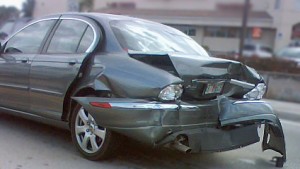Car insurance like all types of insurance is designed to provide protection for the insured against large large losses. It does this by spreading the risk of these large (but fortunately infrequent) potentially catastrophic events over the entire group. In this way everyone pays a smaller portion of the big bill, thus making it affordable for everyone, rather than disastrous for a few.
The small periodic payments of course are called “premium” payments that you make to the company. And out of these payments the insurance company covers the claims of anyone involved in a covered event. Premium payments also have to cover the insurance company’s administration costs and its profit. The obvious reason people buy car insurance is to limit the risk. But unlike some other forms of insurance some forms of car insurance are required by law.
In order to legally operate a motor vehicle states require certain things. For instance, most states require that cars be inspected to ensure that they have basic equipment that is operating properly i.e. tires have enough tread, windshield wipers work properly, headlights work and are adjusted so they don’t blind oncoming drivers and of course that brakes are working properly. But states also require certain forms of car insurance mainly Liability Insurance.
What is Liability Insurance?

No Fault Insurance
Currently twelve states have “No-Fault Insurance”. In these states, Florida, Hawaii, Kansas, Kentucky, Massachusetts, Michigan, Minnesota, New York, New Jersey, Pennsylvania, North Dakota and the District of Columbia car insurance claims are handled a little differently. The no fault system streamlines the payment process by requiring insurance companies to pay for the claims of their own policy holders rather than having to sue the insurance company of the other driver. Thus your own insurance company will cover you up to the limits of your policy. For amounts that would exceed your coverage you still have the right to sue the other driver.
Types of Liability Insurance
There are two different types of liability insurance:
Bodily injury:
Obviously, if you cause damage to the driver or occupants of another car you (and thus your insurance company) will be responsible for any injuries to those occupants. This is called bodily injury coverage.
Property damage:
In addition to causing damage to people, it’s possible to cause damage to property, whether it be another car or a house, tree, mailbox, etc. Property damage insurance coverage covers your liability for causing those types of damage.
The remaining types of Car insurance work more like no fault insurance in that your own insurance covers any losses you sustain, primarily because there is no counter party available to pay.
Collision Insurance
Collision insurance pays for damages to your car in case of an accident. If you are at fault, obviously the other party isn’t going to pay for damages to your car and collision insurance is the only alternative. Collision insurance isn’t required by state law. But may be required by the lender, if your car is financed or leased. If you have an older car, collision insurance may not be worth the cost.
Comprehensive Insurance
Comprehensive auto insurance covers other damages not covered by liability or collision insurance. For instance, it covers damages caused by storms, falling trees, animals, etc. Comprehensive coverage also provides coverage if your car is stolen or damaged due to vandalism.
Uninsured/Under-Insured Motorist Insurance
Uninsured and under-insured motorist insurance protects you if the other driver does not have insurance or does not have enough insurance. Uninsured motorist car insurance provides you with protection if the other driver does not have the required insurance. If the other driver has minimal insurance but not enough to cover his liability, under-insured motorist insurance pays the difference between what the other driver’s coverage limits are and the actual damage costs.
Finding the Best Insurance for Your Car
Although it may seem fairly obvious to some of us, many motorists still fail to search for online auto insurance quotes. If you want to get the best insurance rates, you have to utilize all that is available to you online. For example, many insurance sites offer a car insurance calculator that will give you an approximate rate that you can expect to pay based on your credit score, age, location, and other factors. These are great tools when you are shopping for ca insurance. However, be aware that like any site online that asks for your information, some may be used to steal personal info. Do not give out things like social security number or credit card number. Moreover, always do your research to avoid a scam.
See Also:
- Do You Know That You Can Lower Your Car Insurance Costs?
- Look Out Ahead: How to Avoid Common Road Hazards
- Five Ways To Save On Car Insurance Costs
- Make Car Insurance Quotes a Regular Habit
- Teen Car Insurance Discounts to Save You Money
- Health Insurance Information and Procedures
- It Doesn’t Need To Be Difficult To Get A Cheap Home Insurance Quote
- How to Compare Life Insurance Options
- Smart Insurance You Should Invest in
Car Insurance Resources from Amazon:
- Ten Questions – The Insider’s Guide to Saving Money on Auto Insurance: Hidden Discounts Revealed
- Be Insurance Savvy: Home, Auto, Dwelling, Renter’s, Flood and other Personal Insurance Explained (Volume 1)
- How To Save Money on Car Insurance: The “must have” insider’s guide to saving money on car insurance in the UK
- Vehicle Insurance: Beware: Double Coverage Save $22,000 with the right policy
- Cheap Insurance for Your Home, Automobile, Health, & Life: How to Save Thousands While Getting Good Coverage
Photo Credits: By zoovroo
